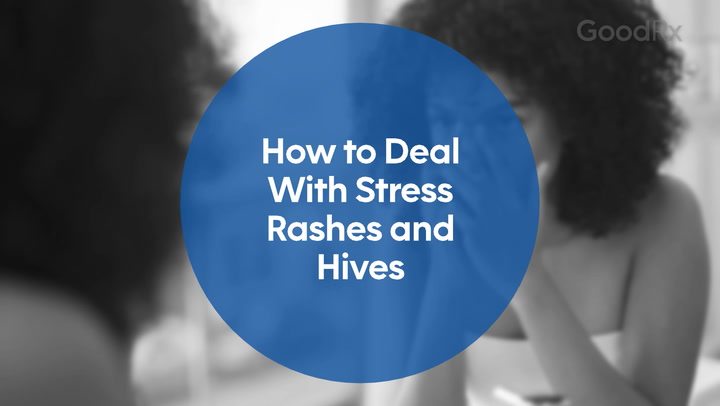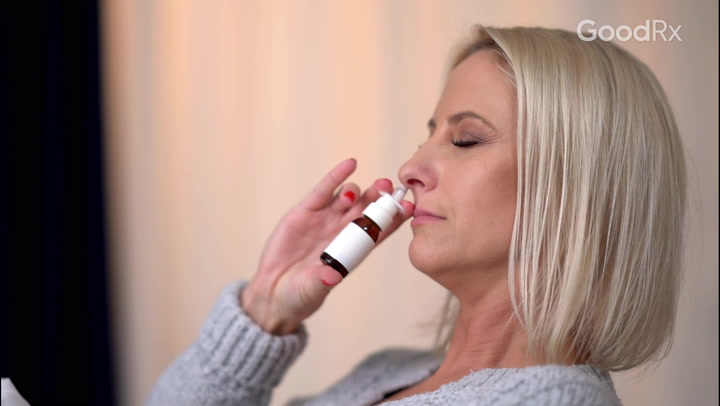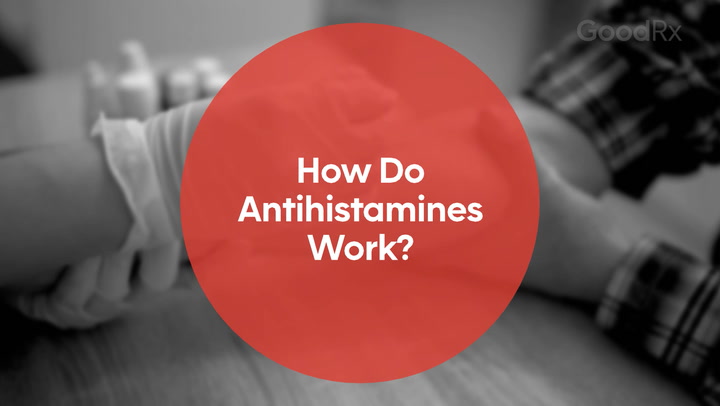
Is There a Non-Drowsy Benadryl? No, But Here Are the Best Non-Drowsy Antihistamines
Key takeaways:
Second- and third-generation antihistamines are less likely to cause drowsiness. Of these, Allegra (fexofenadine) is the least drowsy option. Zyrtec (cetirizine) works the fastest but has a higher chance of making you feel drowsy.
First-generation antihistamines are more likely to make you drowsy. They’re often found in cold and flu products, sleep aids, and motion sickness pills. Examples include Benadryl (diphenhydramine) and Aller-Chlor (chlorpheniramine).
We can’t say for certain which non-drowsy antihistamine is best for allergy symptoms. If one antihistamine doesn’t provide relief, you may need to try another to find the best fit for you.
Table of contents
Sneezing, runny nose, and itchy, watery eyes. Many of us reach for antihistamines to relieve symptoms of allergic rhinitis, also known as allergies or hay fever. Drowsiness, however, is a well-known side effect of antihistamines. With so many options at the pharmacy, how do you choose an antihistamine that won't leave you feeling sleepy?
How do antihistamines work?
Oral antihistamines are medications commonly used for seasonal allergies, hives, and the common cold. Some are also labeled to prevent motion sickness or help you sleep.
Antihistamines work by blocking the action of histamine. Histamine is a natural chemical in your body that drives allergy symptoms. When your body senses an allergen or trigger — whether it’s pollen, pet dander, or dust — it releases histamine into your system. This kick-starts your body to try to get rid of the allergen. That’s when you experience allergy symptoms like itching, congestion, or runny nose. Blocking histamine helps relieve those symptoms.
Search and compare options
What are the best non-drowsy antihistamines?
If you’re looking for allergy relief without the drowsiness, your best options are second- or third-generation antihistamines (more details on these terms later). They’re available over the counter (OTC) or with a prescription. Examples include:
Allegra (fexofenadine)
Clarinex (desloratadine)
Claritin (loratadine)
Xyzal (levocetirizine)
Zyrtec (cetirizine)
These newer antihistamines have major advantages over their first-generation cousins. As mentioned, they’re less likely to make you sleepy. They don’t usually cause dry mouth, constipation, or urinary problems, either. These are common side effects for first-generation antihistamines.
Second-generation antihistamines also last much longer in your body. For example, the most common form of Allegra should last for about 24 hours, after you take a dose. This once-daily dosage is also the case for other second- and third-generation antihistamines. This is compared to Benadryl (diphenhydramine), a popular first-generation antihistamine, which may start wearing off after 4 to 6 hours.
Is Benadryl a non-drowsy antihistamine?
No, Benadryl commonly causes drowsiness. As we’ll explain next, Benadryl can reach areas of your brain that make you sleepy. In fact, its active ingredient (diphenhydramine) is included in many OTC sleep aids. So you won’t find a “non-drowsy Benadryl” on pharmacy shelves.
Which antihistamine causes the least drowsiness?
Research suggests that Allegra is the least sedating of the newer antihistamines. According to drug safety monitoring reports, Claritin and Allegra are less likely to cause sedation (drowsiness) than Zyrtec. And a statistical analysis of multiple studies found that Allegra is less sedating than other antihistamines.
Read more like this
Explore these related articles, suggested for readers like you.
This is probably because Allegra doesn’t cross the blood-brain barrier very much at all. This is a system of cells that regulates what substances pass into the brain. Medications that cross the blood-brain barrier can cause drowsiness, dizziness, and other brain-related side effects.
In contrast, Zyrtec does cross the blood-brain barrier and is more likely to cause drowsiness than other second-generation antihistamines. But it’s still less likely to make you sleepy than first-generation antihistamines.
The size of your dose matters, too. A review of multiple studies concluded the following:
Allegra has no sedative effect, even at high doses.
Claritin and Clarinex have no sedative effect at recommended doses. But they have a low sedative effect at higher-than-recommended doses.
Zyrtec has a low sedative effect at recommended doses and a moderate sedative effect at higher-than-recommended doses.
Why do some antihistamines make you sleepy?
Sedation is a prominent side effect of older antihistamines. These are known as first-generation antihistamines. Examples include:
Aller-Chlor (chlorpheniramine)
Benadryl
Bonine (meclizine) — also sold under the brand name Dramamine Less Drowsy
Dramamine (Dimenhydrinate)
Unisom SleepTabs (doxylamine)
Vistaril (hydroxyzine)
First-generation antihistamines can make you drowsy because they cross the blood-brain barrier. That’s why older antihistamines are sometimes marketed as sleep aids.
First-generation antihistamines are also often used in cold and flu products. This is to provide a side benefit of drowsiness when you’re feeling ill and need plenty of rest. They also have “drying” effects that can help with a runny nose.
Drowsiness and dizziness are something to be aware of with first-generation antihistamines. They may increase the risk of falls or fractures in people 65 years or older. They’re also linked to impaired driving as well as fatal car and flying accidents. What’s more, as mentioned earlier, these medications can cause dry mouth, constipation, and trouble urinating.
How do ‘non-drowsy’ antihistamines work?
Most of the newer, second- or third-generation antihistamines are considered “non-drowsy.” But this isn’t entirely accurate for everyone who takes them. As antihistamines, they block histamine’s effects just like first-generation antihistamines do.
However, they don’t cross the blood-brain barrier as much as older antihistamines. This makes them less likely to cause drowsiness. But as explained above, drowsiness is still possible, with Zyrtec having a higher likelihood of causing it. Some people are more sensitive to this side effect than others.
Which works best for symptoms of allergic rhinitis?
We don’t have many head-to-head studies on non-drowsy antihistamines for allergies. So we don’t know for sure which is best. But overall, the research hints that Xyzal may have a slight edge over the others for relieving allergy symptoms. Here’s a summary of some of the research.
According to a review of multiple studies, Clarinex, Allegra, and Xyzal all helped relieve nasal congestion from allergies better than placebo (a dummy pill). A statistical analysis suggested that Xyzal improved allergic rhinitis symptoms to a greater degree than other newer antihistamines (including Clarinex and Allegra).
But none of the studies in these analyses compared the medications directly. So again, we can’t draw firm conclusions. And everyone responds differently to medications, so there may not be a one-size-fits-all answer.
Ultimately, the best non-drowsy antihistamine is the one that works best for you with the least amount of side effects. You may have to try a few different options to find the one that’s right for you.
Are antihistamines good for cold symptoms?
The common cold (which is caused by a virus) and allergic rhinitis share similar symptoms. So it’s only natural that many people reach for antihistamines when they have a cold. But are they effective?
A statistical analysis of multiple studies found that antihistamines in general relieve cold symptoms in adults. But this was for the first 1 or 2 days only, with no benefit later on. And there’s no evidence that antihistamines are effective for cold symptoms in children.
The bottom line
Second- and third-generation antihistamines are often referred to as being “non-drowsy.” But some of them are more likely to cause drowsiness than others. Allegra (fexofenadine) is the least likely antihistamine to cause drowsiness. Zyrtec (cetirizine), though, can make you feel drowsy, even at regular doses. First-generation antihistamines, such as Benadryl (diphenhydramine), typically cause drowsiness.
There isn’t definitive evidence proving that one non-drowsy antihistamine is better than another. So, the best choice for you can depend on your preferences. Keep in mind that you may need to try more than one antihistamine to find the best fit.
Why trust our experts?


References
Bachert, C. (2009). A review of the efficacy of desloratadine, fexofenadine, and levocetirizine in the treatment of nasal congestion in patients with allergic rhinitis. Clinical Therapeutics.
Church, D. S., et al. (2011). Pharmacology of antihistamines. World Allergy Organization Journal.
De Sutter, A. I., et al. (2015). Antihistamines for the common cold. Cochrane Database of Systematic Reviews.
Fein, M. N., et al. (2019). CSACI position statement: Newer generation H1-antihistamines are safer than first-generation H1-antihistamines and should be the first-line antihistamines for the treatment of allergic rhinitis and urticaria. Allergy, Asthma & Clinical Immunology.
Huang, C., et al. (2019). Antihistamine effects and safety of fexofenadine: A systematic review and meta-analysis of randomized controlled trials. BMC Pharmacology and Toxicology.
Mann, R. D., et al. (2000). Sedation with “non-sedating” antihistamines: Four prescription-event monitoring studies in general practice. British Medical Journal.
Meltzer, E. O. (2005). Evaluation of the optimal oral antihistamine for patients with allergic rhinitis. Mayo Clinic Proceedings.
Mösges, R., et al. (2013). The effectiveness of modern antihistamines for treatment of allergic rhinitis – an IPD meta-analysis of 140,853 patients. Allergology International.
National Center for Biotechnology Information. (2024). PubChem compound summary for CID 6834, brompheniramine.
Simon, F. E. R., et al. (2008). H1 antihistamines: Current status and future directions. The World Allergy Organization Journal.





























